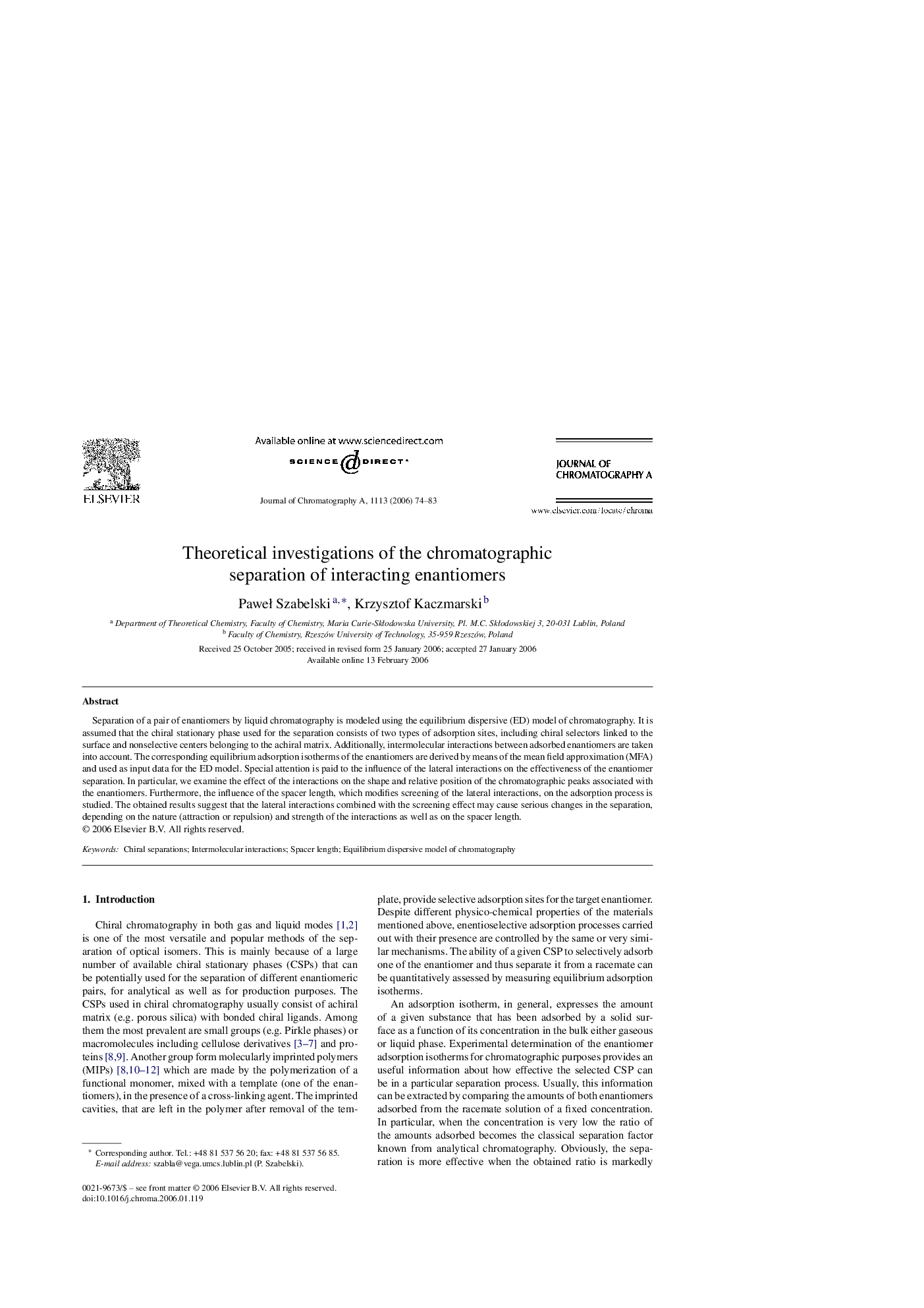| Article ID | Journal | Published Year | Pages | File Type |
|---|---|---|---|---|
| 1211551 | Journal of Chromatography A | 2006 | 10 Pages |
Separation of a pair of enantiomers by liquid chromatography is modeled using the equilibrium dispersive (ED) model of chromatography. It is assumed that the chiral stationary phase used for the separation consists of two types of adsorption sites, including chiral selectors linked to the surface and nonselective centers belonging to the achiral matrix. Additionally, intermolecular interactions between adsorbed enantiomers are taken into account. The corresponding equilibrium adsorption isotherms of the enantiomers are derived by means of the mean field approximation (MFA) and used as input data for the ED model. Special attention is paid to the influence of the lateral interactions on the effectiveness of the enantiomer separation. In particular, we examine the effect of the interactions on the shape and relative position of the chromatographic peaks associated with the enantiomers. Furthermore, the influence of the spacer length, which modifies screening of the lateral interactions, on the adsorption process is studied. The obtained results suggest that the lateral interactions combined with the screening effect may cause serious changes in the separation, depending on the nature (attraction or repulsion) and strength of the interactions as well as on the spacer length.
